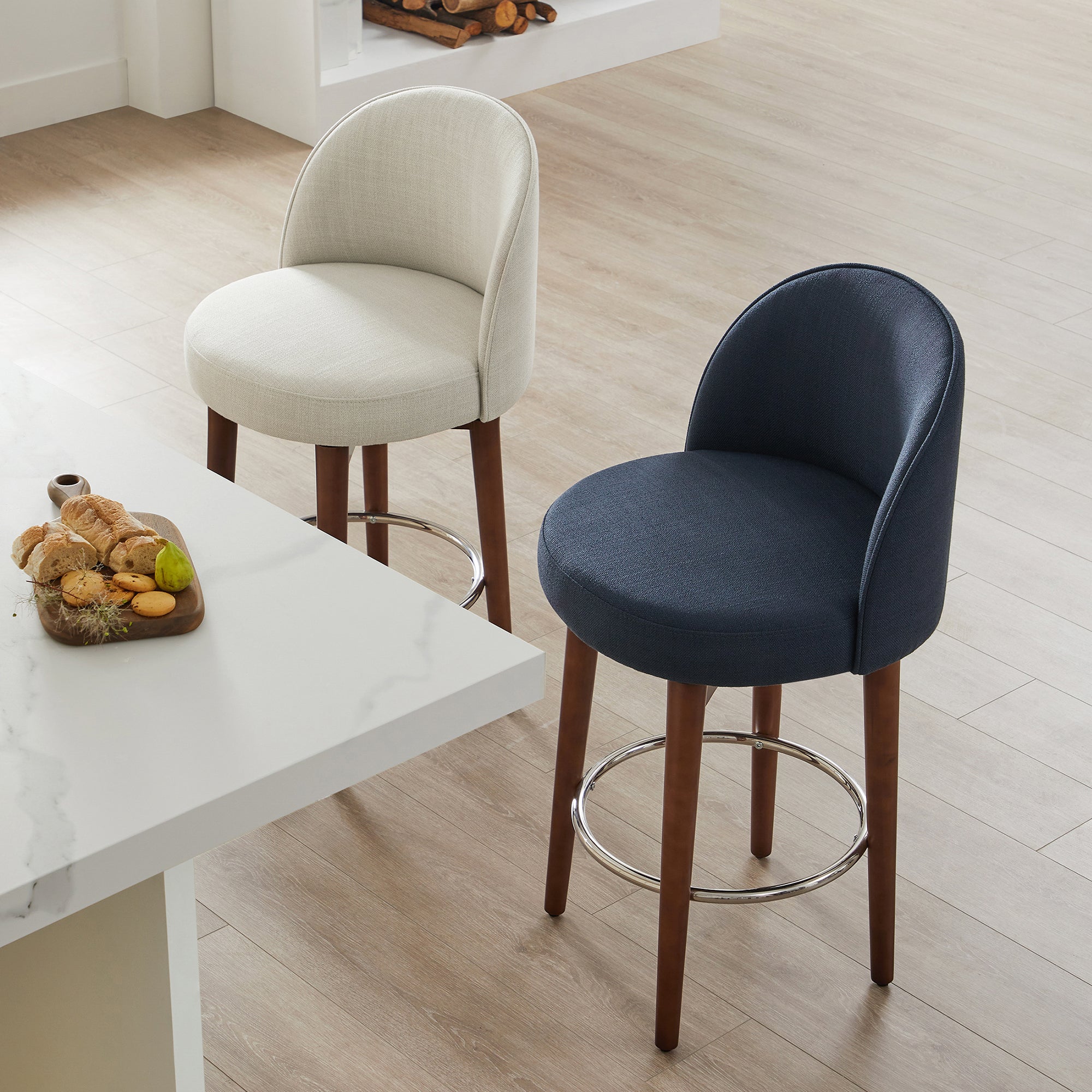Transform Your Space: Discover the Secret to Perfect Counter Stools!
Counter stools are more than just seats; they are a blend of functionality and style that can elevate any space, whether it's a cozy kitchen or a bustling commercial café. Their versatility allows homeowners and business owners alike to create inviting environments that encourage conversation and connection. Choosing the right counter stools is essential, as they can dramatically enhance both the aesthetic appeal and the usability of a space. Imagine entertaining guests around a kitchen island, where the right stools not only provide comfort but also complement your décor. In this guide, we’ll explore the various aspects of counter stools, ensuring you find the perfect fit for your home or commercial area.

Understanding Counter Stools
Counter stools are typically designed to be used at counter-height surfaces, which generally range from 34 to 39 inches. The key difference between counter stools and bar stools lies primarily in their height, with bar stools usually designed for surfaces around 40 to 42 inches high. This distinction is crucial when selecting stools for your space, as the wrong height can lead to discomfort and awkward seating arrangements. When considering counter stools, pay attention to the variety of styles and materials available. From sleek metal designs to warm wooden finishes, the right choice can enhance your environment's overall aesthetic and functionality.
Factors to Consider When Choosing Counter Stools
Selecting the ideal counter stools involves several key considerations that can impact both design and utility. First and foremost, height is critical; ensure you measure your counter and choose stools that allow for comfortable seating without feeling cramped or towering over the surface. Additionally, consider the style and material of the stools. Whether you prefer a modern minimalist look or a rustic farmhouse vibe, the design should harmonize with your existing décor. Beyond style, comfort cannot be overlooked. Features like padding, back support, and footrests can significantly enhance the seating experience, especially for those long gatherings with family or friends. Assessing these factors will help you find stools that not only look great but also meet your practical needs.
Height and Size
It's essential to measure your counter height accurately before making a purchase. Ideally, there should be about 10 to 12 inches between the seat of the stool and the underside of the counter to ensure comfort. If the stools are too tall, it can lead to an uncomfortable dining experience, while stools that are too short may leave guests feeling awkward and out of place. Taking the time to measure will save you the hassle of returns and ensure a perfect fit.
Style and Aesthetics
The style of your counter stools should reflect your personal taste and complement the overall aesthetics of your space. For modern interiors, consider stools with clean lines and sleek finishes. If you lean towards a more traditional or rustic look, wooden stools with intricate detailing will enhance your decor. Mixing and matching styles can also create an eclectic charm, making your space feel unique and inviting.
Material and Durability
Counter stools are available in a variety of materials, each with its own set of advantages and disadvantages. Wooden stools add warmth and can be very durable, but they may require more maintenance to prevent scratches and stains. Metal stools, on the other hand, offer a contemporary look and are often easier to clean, making them ideal for high-traffic areas. Upholstered stools provide comfort but need regular cleaning, especially in homes with children or pets. Understanding the material's durability and maintenance needs will help you make an informed decision.
Comfort and Functionality
Comfort is paramount when selecting counter stools, particularly for settings where guests may linger. Look for features like ergonomic designs that support the back, generous cushioning, and footrests that provide a place to rest the feet. If you're entertaining often, consider stools that offer swivel capabilities for added convenience, allowing guests to turn and converse easily without needing to shift their position.
Where to Use Counter Stools
Counter stools can enhance various settings, making them an ideal choice for both home and commercial spaces. In the kitchen, they can create a casual dining area around an island, encouraging family gatherings during meal prep. In bars and cafés, they can foster a social environment, inviting patrons to sit and enjoy their drinks. Outdoor spaces, like patios or decks, can also benefit from weather-resistant counter stools that allow for al fresco dining. When selecting styles for these different environments, consider the overall theme and functionality of the space to ensure a cohesive look.
Care and Maintenance of Counter Stools
Proper care and maintenance of your counter stools are essential to ensure they remain in good condition for years to come. For wooden stools, regular dusting and the occasional application of wood polish can keep them looking fresh. Metal stools typically require a simple wipe down with a damp cloth, while upholstered stools may need vacuuming or spot cleaning to address spills. Being proactive with maintenance will help preserve the beauty and functionality of your counter stools, allowing you to enjoy them in your home or business for an extended period.
Final Thoughts on Choosing Counter Stools
Choosing the right counter stools can transform your space, enhancing both its functionality and visual appeal. By understanding the key factors such as height, style, material, comfort, and appropriate usage areas, you can select stools that cater to your specific needs and preferences. Remember that these elements work together to create an inviting atmosphere, whether for casual family meals at home or social gatherings in a commercial setting. Take the time to evaluate your options, and you'll discover that the perfect counter stools can truly elevate your environment.




